In Gotham City, people are rarely who they seem to be. Someone could be assuming the identity of a villain right in front of your eyes, and you would not realize it until it was too late. How are things going for you, guys? Marvelous Videos is back with a new and thrilling origin story. The DC villain we have for you today is, on the whole, rather tricky. Everything about his character, his sense of duty, his bewilderment, and his worldview will astound you.
Clayface is a complex yet compassionate villain who is one of the most talented and aggressive shape-shifters ever seen in the DC Universe. Although one surprising aspect of Clayface is that he has been performed by a wide variety of people, many of whom have done so effectively. And it is for this reason that Clayface’s story is constantly evolving and absorbing new individuals into the mudslide that is his body. Let us get started with the video, and be prepared for a lot of plot twists along the way.
The origin of Clayface – where it all started
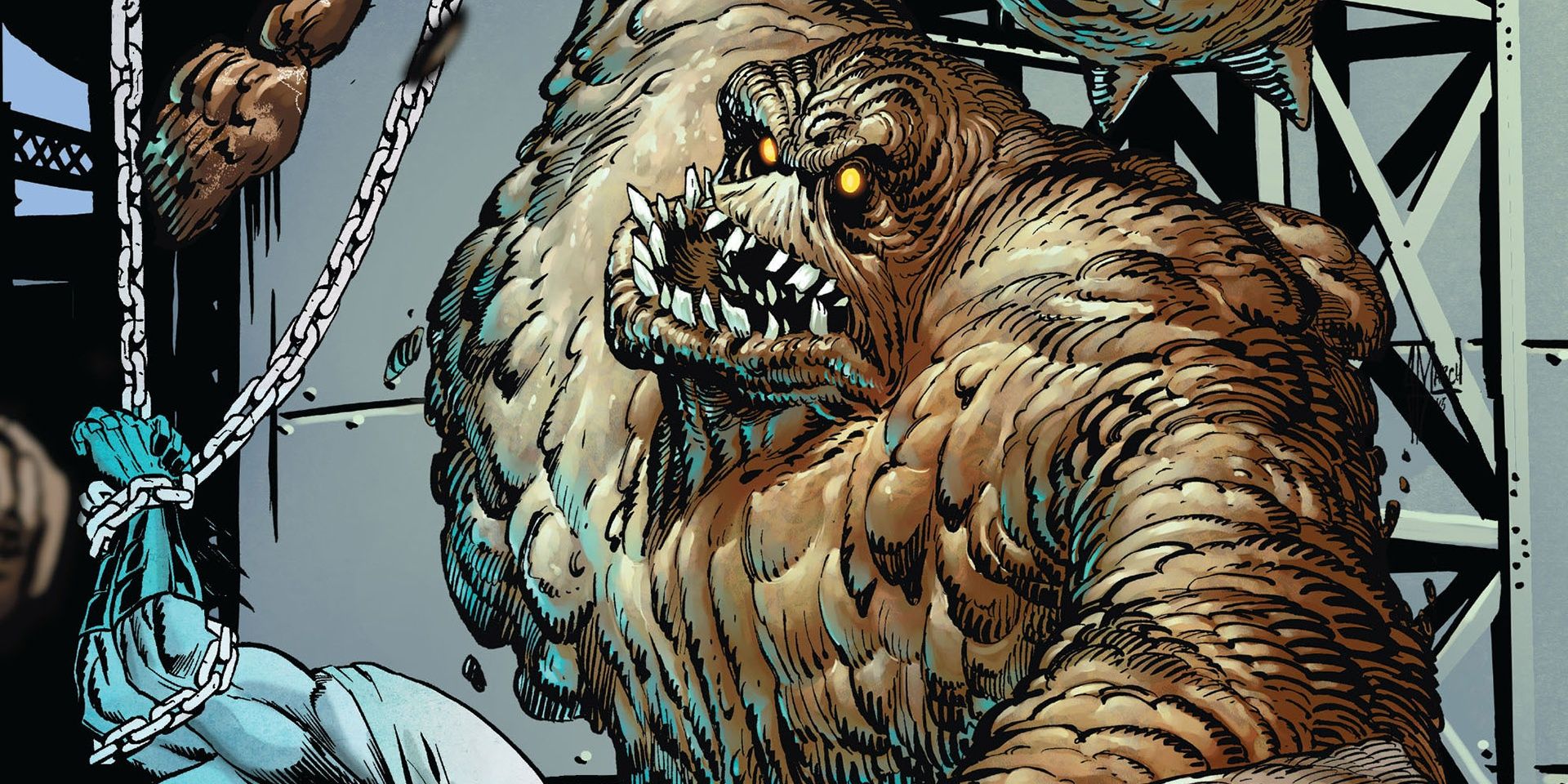
The original Clayface is Basil Karlo, who first appeared in Detective Comics issue number #40 and was created by Bill Finger and Bob Kane. He is undoubtedly named after horror legends Boris Karloff and Basil Rathbone. Until he became the villain he is now known for, Basil Karlo was a lousy horror movie actor whose casting director once advised him that he was not talented enough for a significant role. After hearing such a life-altering remark, whose dreams and motivation would not be shattered?
So, eventually, Karlo tried to get help from the crime lord Penguin. Penguin immediately hired the actor as a henchman and handed him a lump of mystical clay, which he swore would resolve Karlo’s acting faults. And now you are about to witness the birth of Clayface. Basil soon got his wishes because it turns out the clay sort of jumped on him, entered his bloodstream, and rebuilt the structure of his body, which gave Basil remarkable shape-shifting powers.
Karlo was able to thrive in his acting profession because of his new shape-shifting abilities. And as he continued to improve his acting skills, the clay inside him kept growing as well. Gradually, he developed the power to duplicate the DNA of everybody he came into contact with and store it in his memory, which he could access at any point. If not used correctly, this ability sure sounds pretty scary. But since this is the story of a villain and not a hero, of course, things are about to get worse from here on out.
Karlo was later hired by The Penguin, as was part of their deal, and he was forced to engage in a lot of illegal actions. Not being comfortable with it at first, over time, though, he began to like it. And soon enough, Basil Karlo lost any sense of who he really was until he was reduced to a heap of anger and hatred. And then it became even more difficult for him to maintain his human form. It sounds sad if you look at it from his perspective because he technically did not ask for this life but was forced into it.
Karlo’s increased anger eventually got him into deep trouble after he punched a director who had criticized him for improvising on set. It seemed as if even the slightest bit of things brought out the worst reaction from him. Soon, he became a “nobody” in the film industry because no one was ready to hire him. That is when Karlo got totally devoted to a life of crime and violence as “Clayface.”
Well, it seems that the events that are now about to take place will bring a rather interesting twist into the story of Clayface.
There was a battle with Mister Mxyzptlk, during which Superman from the pre-flashpoint universe combined his and the post-flashpoint universe’s timelines. And as long-term DC and Marvel fans, we all know what happens when someone messes with the timeline in any manner. So, as a result, the histories of two universes began to merge, changing the very fabric of reality as was known.
Now, this merged the Clayface we know with the pre-flashpoint version of himself, erasing or altering much of his past. As a result of the alteration, Clayface’s origin now has an entirely different story to tell. Basil Karlo was the son of Vincent Karlo, an artist who created cinematic masks and cosmetics. Vincent revealed to Basil that the key to his success was a peculiar putty called Renu, which, when applied to a surface, allowed the sculptor to bend the substance into any desired shape.
But when his production company found that Renu was, in fact, poisonous to human flesh and could cause diseases, Vincent was fired. So much for faulty innovation! Now, one part of this new story is still similar to the fact that twenty years later, Basil became an actor. Unlike his previous version, he became instantly successful due to his skills and attractive appearance.
Then Glory Griffin entered his life as his personal assistant for the duration of the production of the film Metamorphosis. Basil received a lot of positive feedback after the film was finished, so he decided to shift to a movie called Second Skin, which reminded him of his father’s previous career. Glory became a more permanent person as she would now serve as Basil’s personal assistant for all of his films thereon. After an interview with the casting director of the Second Skin, Basil was cast in the lead role.
Basil was driving back to his flat when he received a rather upsetting phone call that his father had been found dead. While still in shock, unable to handle such a piece of sudden news, Basil, unfortunately, crashed his car, leaving him disfigured. In a sad and desperate attempt to save his profession, he started using Renu in order to sustain his attractive appearance. But his supply soon began to fall short, so Karlo planned to steal a vast quantity of the chemical from the manufacturing factory in Gotham City.
His plans came to an end because Batman caught him. As a result, when he was taken to the hospital for recovery, Karlo’s horrific appearance was eventually exposed to the whole world in the news coverage of the incident. His career was now destroyed, and even his girlfriend Glory had left him. It looks like it is correct what they say, that bad luck always comes in abundance.
Ultimately Karlo made a wrong life choice when he decided to break into the warehouse where the cops were keeping his stolen stash of Renu. The cops opened fire on the vials, which led to Karlo being entirely drenched in the chemical. This altered every muscle and bone inside his body and turned him into the horrific monster Clayface.
Clayface Origin in Batman the Animated Series
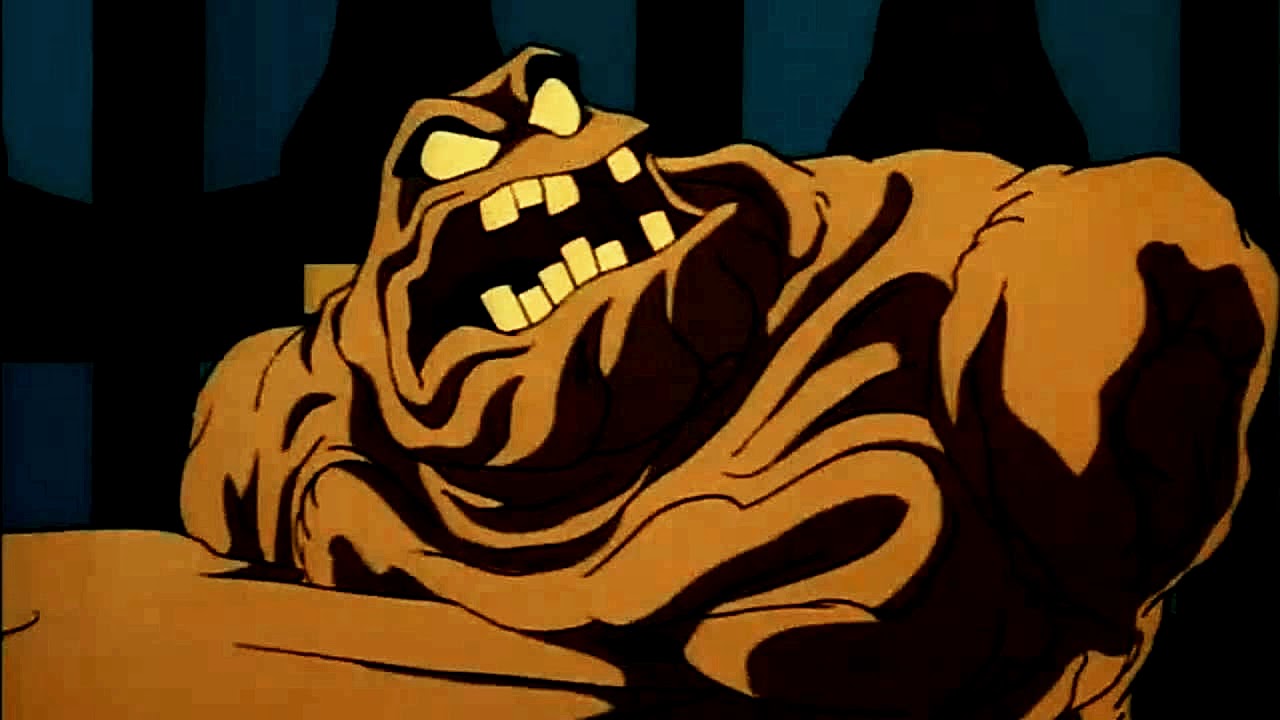
Clayface appears in Batman the Animated Series as a villain only this time; he is known as Matthew Hagen and is portrayed by Ron Perlman. Matt Hagen was an actor for Imperial Pictures who was previously known as “The Man of a Million Faces.” But he was met with a terrible car accident which left him severely injured and disfigured. He was admitted to a burn clinic when a greedy industrialist Roland Daggett contacted him.
This man enlisted Hagen as a test subject for a drug known as “Renuyu,” meaning “Renew You,” which he claimed could recover his natural appearance instantly. As a result of this deal, Hagen was made to impersonate certain people unlawfully for Daggett. Hagen hated it with every fiber of his being, but he had little choice because the Renuyu chemical was highly addictive, and Daggett was the only one who could manufacture it.
Now, Daggett’s plan was to acquire some specific files from Lucius Fox. So, he had Hagen impersonate Bruce Wayne for this task. Unfortunately, Hagen was unsuccessful due to Batman’s interference. Hagen then tried to rob Daggett’s factory of a considerable amount of Renuyu. But Daggett’s thugs, Germs, and Raymond Bell captured Hagen and attempted to murder him by throwing a whole batch of the chemical on his face.
However, their actions led to the birth of something disastrous. The overdose of the chemical saturated every molecule in Hagen’s body and transformed him into a massive, deformed clay-like creature capable of shapeshifting into anything or anyone he desired for short amounts of time. This incident left Hagen traumatized because his entire life just changed in one fell swoop.
As a result, he decided to take revenge on Daggett. He pretended to be an obese woman in the crowd of a talk show where Daggett was marketing Renuyu after it had been made available to the public, then he changed back into himself to kill him. Although he was soon stopped by Batman, who used footage from Hagen’s earlier movies to remind him of who he was. Clayface gives in, and moments before the Dark Knight captures him, he fakes his own death.
Then, having emerged from hiding, Clayface resurfaced since the last incident of vengeance grudge against Daggett. Dr. Stella Bates, a former medical adviser on Hagen’s films who had fallen in love with him, helped him recover some of his appearance and state. She sold her motel to make money for a lab where she could try and treat him. But Batman makes an entry just in time and stops Dr. Bates from healing Clayface.
Apparently, he had stolen the required formula for the chemical from Wayne Biomedical Labs. But while Hagen and Batman were fighting, Hagen’s frail body absorbed too much rainwater to maintain its form, and he fell into the ocean, and his body got utterly dissolved in the saltwater. Oh, but guess what? Clayface is not done yet. Yes, he is coming back!
It turns out that the particles of his body actually got exposed to some waste chemicals in the ocean from a factory nearby. Through this, he was able to return to his original form but not wholly. He was still too fragile to fight. So Clayface built a Young Girl, named her Annie, and sent her off to explore the area before returning. Annie, on the other hand, forgot her orders as soon as she left and headed for Gotham.
Clayface eventually was able to transform into a massive muscle man and began conducting robberies in order to search for Annie. In the meantime, Annie had met Robin, and before Clayface could reabsorb her, Robin came to the rescue. But Clayface had planned to drop Robin in a tank of chemicals, so Annie raced in and attacked Clayface, which resulted in her being absorbed and Clayface becoming whole again.
A furious and broken-hearted Robin asks Clayface to bring her back, but unfortunately, she is gone forever. And as this fight continues, Batman arrives and stops Robin, which gives Clayface the opportunity to kill the heroes. But the sparks from his ax hands resulted in an explosion due to the liquid that Robin had poured on Clayface before, and he lost consciousness. He was arrested by the police for the many robberies he had committed and also for “Murder” for killing the girl Robin fell for.
Well, with these fantastic origin arcs, now let us explore other versions of him.
Some of the finest Clayface stories
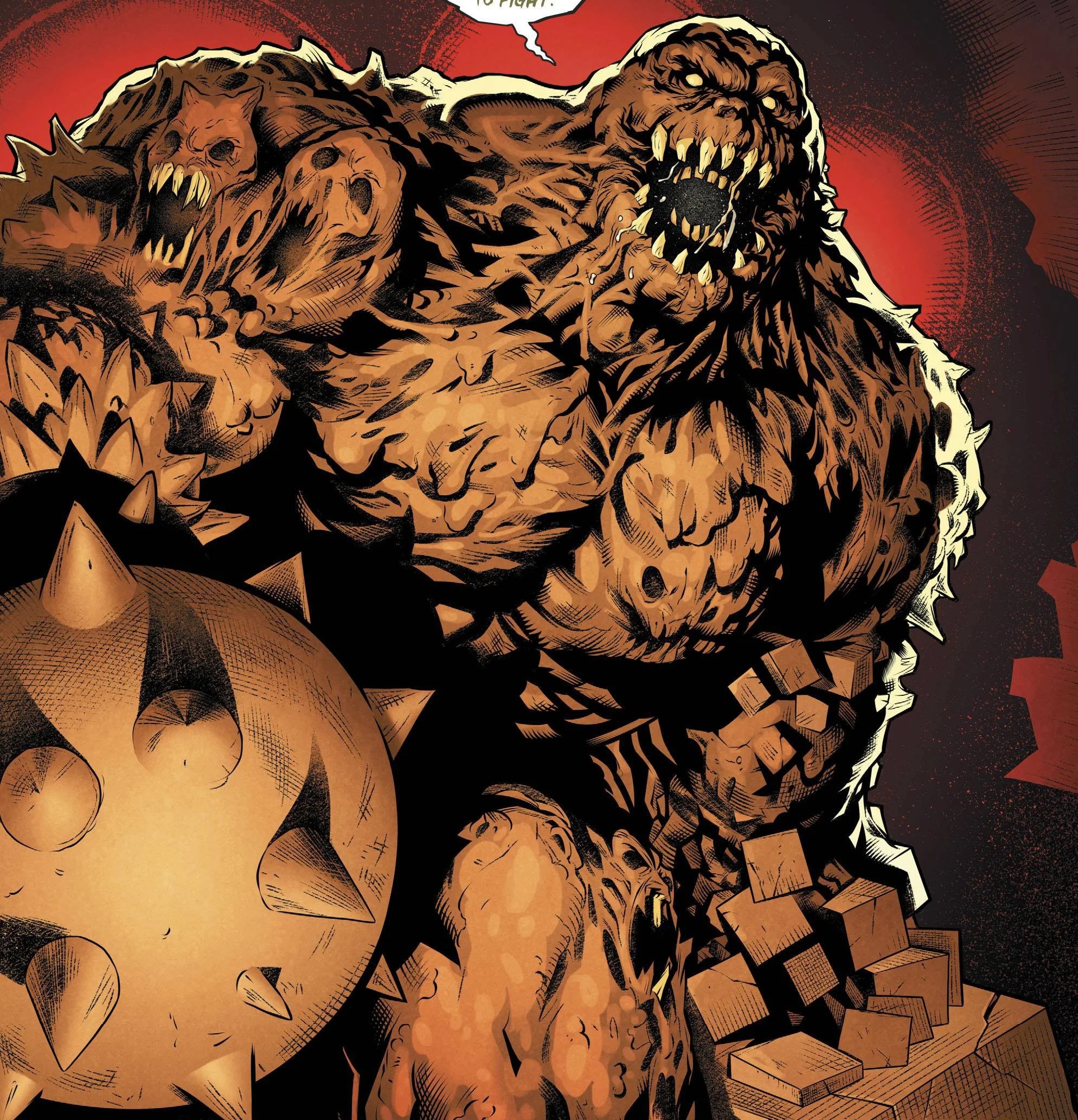
Over the years, DC has given us some brilliant comic versions of Clayface. Let us dig into Batman: Li’l Gotham issue number #9, which was written by Derek Fridolfs and Dustin Nguyen, along with the artistic genius of Dustin Nguyen. This is probably the most likable Clayface story, which takes place in Li’l Gotham’s all-ages environment. Damian goes to a comic convention with Bruce in order to meet one of his father’s heroes, Gray Ghost, who was portrayed by actor Simon Trent.
It serves as an example of how actors and superheroes can encourage their fans to accomplish great things. On the other hand, Clayface portrays the opposite end of the spectrum as an actor who is fixated on the past and tries to extort as much money as he can from those at the convention. This story is relatively lighthearted and somewhat insightful in terms of the nature of fandom and how it affects the viewers.
The next one appears in Batman Annual issue number #11, which was written by comic legend Alan Moore and illustrated by George Freeman. Here, we have a rather odd love story that features Preston Payne, one of Clayface’s later versions. Payne, who is mentally ill, has fallen in love with Helena, a mannequin in a clothes boutique. Now that is interesting!
Suddenly, Batman finds himself in the middle of a supposed love triangle, and he has a tough time dealing with a Clayface who is after more than just money. The plot develops into a study of deception, twists, and turns that come along with love. It culminates in a conclusion in which Batman succeeds by knowing his enemy, and the enemy comes to his own strange terms with his sense of reality. A very unique story indeed.
Now we have the fall of the Batman in detective comics volume 1, issue #981. This concludes James Tynion’s work on Detective Comics since its relaunch in Rebirth. This narrative explores all of his unique features. Karlo became a savage monster after being infected with the Monster Men serum. He goes on a rampage in Gotham City. Colonel Kane handed his daughter Batwoman a bullet carrying a chemical capable of permanently dissolving Clayface when the Gotham Knights attempted to capture him.
Kate eventually takes the death shot and seems to have killed Clayface. This incident caused a split within the squad, which finally disbanded. Although, it is ultimately discovered that Clayface actually survived and has since become powerless. He keeps this a secret and goes into hiding because he wants to be left alone.
In Joker’s Asylum: Clayface, issue number #1, he portrays the dark side of nostalgia. Clayface infiltrates a film festival, fearful that his acting career will be destroyed. What brings this drama to life is the artistic genius of Kelley Jones in portraying Clayface. Jones’ approach enhances the horrific and brilliantly combines the character’s various aspects, which results in one scary Clayface manifestation.
His fluid form and size have never been shown as well as it is in this issue. Jones’ perfection is evident in Clayface, and that really adds a different touch to him. We can only wish that he will return to the character for more work in the future.
Some lesser-known facts about Clayface
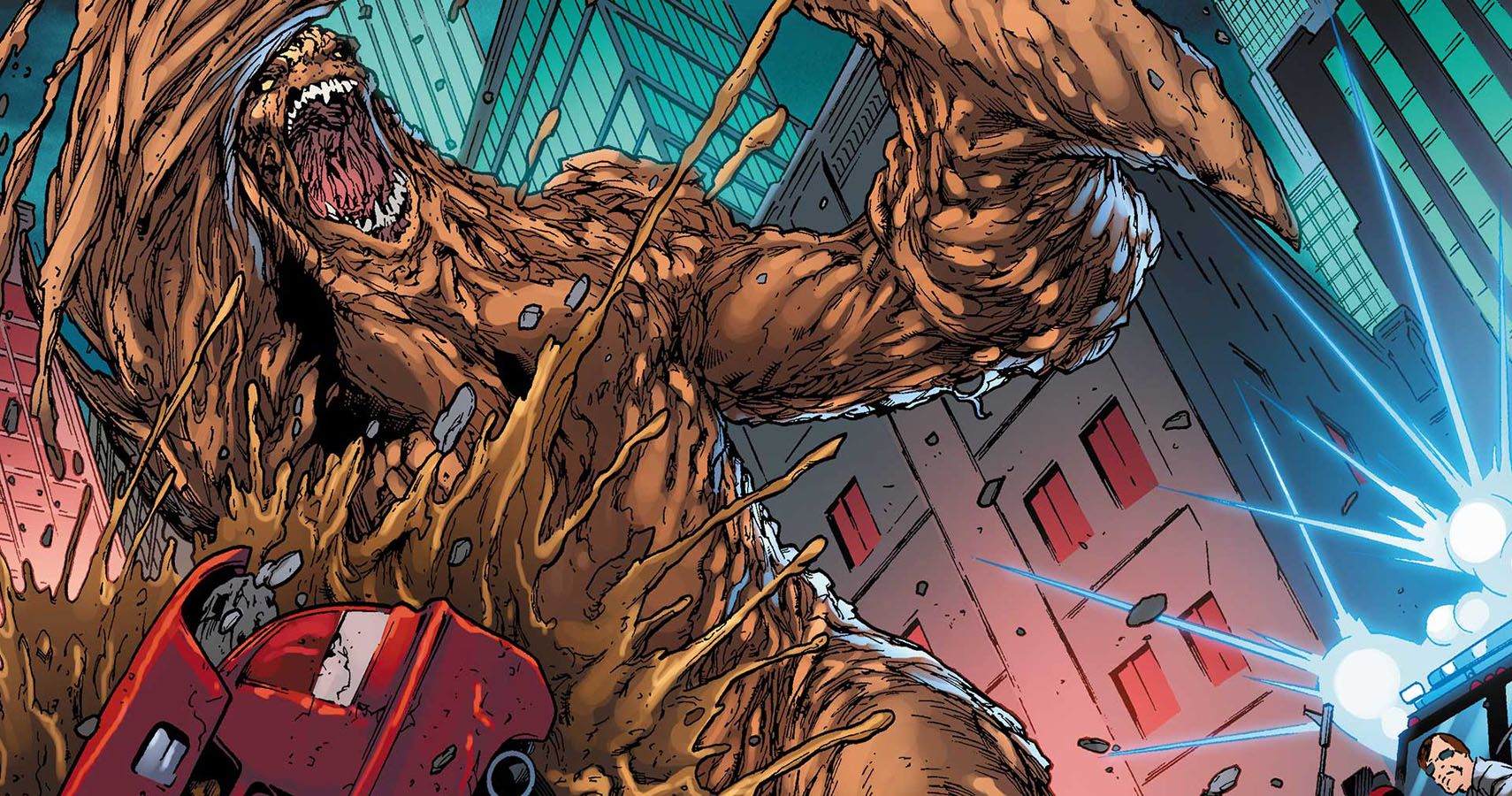
Clayface has been one of the most dynamic villains in the history of the DC Universe. Let us take a look at some of the fascinating facts about him.
In the Post-Crisis universe, Basil Karlo organized the creation of a team of Clayface criminals to fight Batman. Basil was still human at this time, but he was able to gather all of the Clayface villains, including the recently murdered Matt Hagen, whose bones were utilized to create a post-mortem member of the Mud Pack.
Unfortunately, this squad was unable to defeat Batman. Eventually, Basil injects himself with Preston Payne and Sondra Fuller’s blood samples, which turns him into the Ultimate Clayface and gives him shapeshifting powers.
Another ability comes to light when Clayface falls into the ground after his transformation and gets trapped underneath. His body has converted into quartz-like crystals that give him enormous strength. When a great Cataclysm struck the city of Gotham, Basil was freed from his improvised jail that he accidentally trapped himself in.
And so, he immediately set out to get vengeance on Batman. When he accomplished this, he faced Batman head-on and was able to defeat him. However, before he could actually kill Batman, Mr. Freeze and Clayface argued over who had the right to do so. Thought quite foolish of them, this gave Batman a chance to escape and eventually destroy them.
Basil reappeared during the No Man’s Land event after his defeat during the Cataclysm. This results in a fight between him and Poison Ivy. Poison Ivy managed to become a hero after the Cataclysm, when Gotham was isolated from the rest of the country, using her abilities to grow vegetables for the people of Gotham.
Clayface, on the other hand, succeeds in capturing her in order to gain territory. As a result, Batman comes to the rescue and decides to fight Clayface along with Poison Ivy. Ivy eventually utilized her strength to drag Clayface back into the dirt, apparently putting an end to the villain.
After his defeat with Poison Ivy, he launched an attack on Wonder Woman herself, which was somewhat surprising. Clayface went after the hero from Themyscira after entering the Secret Society of Super-Villains, as she was created of clay by her mother at this time in her history.
Clayface retaliated by striking her and successfully absorbing a portion of her power due to his command of clay. As a result, Wonder Woman was reduced to a younger version of herself, which resembled Donna Troy. Wonder Woman then led Clayface into a trap with the help of the real Troy, taking out her clay since it was not compatible with him and restoring her full power.
Clayface was a part of several different criminal teams in the years following his defeat by Wonder Woman. He was among the Injustice League’s most well-known villains, and he also appeared among other villains at the Salvation Run event. His most prominent position, though, was as a member of Libra’s Secret Society of Super-Villains.
During the Final Crisis incident, Clayface, following instructions from Libra, causes an explosion at the Daily Planet, hoping that this will lure Superman out. But Black Mask took charge of Clayface at this point, but he managed to defeat the device and flee from Black Mask until the Outsiders captured him.
After the New 52 emerged, we see one of Basil Karlo’s most dangerous attempts at utilizing his shapeshifting powers. Poison Ivy had gotten Basil out of prison and expressed her desire to marry him. Of course, this turned out to be a ploy as part of her own plans during the Death of the Family event. As a result, Basil wanted revenge for having been exploited.
Basil afterward chose to impersonate Bruce Wayne and thought that he had discovered that Bruce was the actual Batman. On the other hand, Batman deceives Basil by telling him that he left fake DNA for him to take in order to throw him off the scent and then traps Basil in a security system.
Another arc occurred when Basil destroyed his movie set in an irrational rage and transformed his ex-girlfriend Glory into Mudface. After this incident, Batman decides that Basil is out of control and requires treatment rather than imprisonment. As a result, he invites Basil to join his new team of heroes, which includes Tim Drake, Spoiler, Orphan, Batwoman, and Azrael.
Basil accepts because he does not want the beast inside him to gain control. When Hugo Strange’s monster men are destroying Gotham, Basil helps the squad defeat them. He also meets Victoria October, an ARGUS consultant who is working to discover a treatment for Basil’s condition.
As Victoria October’s cure approaches the trial stage, she requests that it be tested on a less critical case. Basil finds himself guilty for Glory’s condition, so he suggests that she should be the first to get the treatment. On the other hand, Glory uses this to bring Basil to Arkham, where her new squad, The Victim Syndicate, traps and tortures him.
As a result, Clayface unintentionally takes over Basil, who causes mayhem in Gotham, particularly after being showered with the elements of the Mud Room, where the team exercises. Batwoman takes the chance to put an end to his life, but it is later discovered that he and Victoria staged his death for unexplained reasons.
Some popular villains who became Clayface
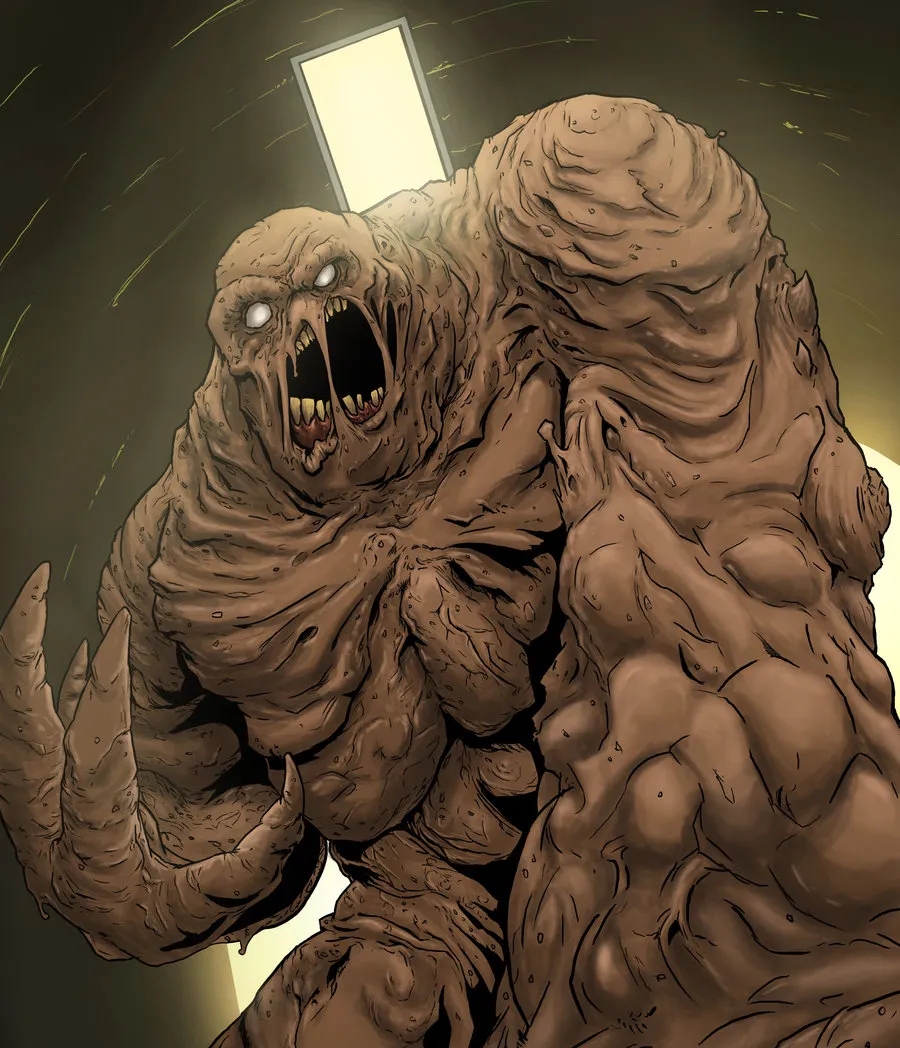
Among the very well-known enemies of Batman, Clayface is often lost in the mix and is undoubtedly a highly underrated villain. His abilities and powers have so far proved to be both a benefit and a curse for Batman and Gotham City. Well, let us now explore precisely who are these other villains assuming the role of Clayface.
In the 1996 Batman series, we find kind of a Clayface rip-off who made his debut as False Face. The character was designed to take the place of Clayface and was played by Malachi Thorne in the series.
Dr. Peter Malley’s portrayal of the character, nicknamed as “Plaything,” is one that is among the most memorable. When a former Clayface’s skin sample bonds with a D.E.O. scientist, the emerging creature goes on the attack. What harms Peter Malley’s reputation the most is that he was only debuted in the 550th issue of Batman before being defeated by a character named Chase. Malley was obviously not remembered by anyone. After all, he did not even die at the hands of the hero. He has not been seen in the post-New 52 universes.
Todd Russell has an advantage against Peter Malley since he is the nemesis of a different Gotham hero. Russell’s Clayface, who was unnamed during his first several appearances, is matched against Catwoman rather than Batman. Russell originally appeared in the first issue of Catwoman Volume 3 and was soon discovered to be a veteran who had been subjected to experiments. Even though he and Catwoman did not get along in his early appearances, Catwoman would eventually set him free when he was imprisoned at STAR Labs.
Johnny Williams is another version of Clayface, who was a key figure in one of the most critical Batman episodes. Williams’ brief tenure as Clayface began in Gotham Knights issue number #60, and he is most remembered for impersonating Jason Todd as part of Hush’s conspiracy in “Hush.” Despite Williams’ outstanding portrayal, the Dark Knight saw right through it because Jason was well aware of Batman’s admiration for him. Williams is most famous these days for an epic prank on Batman and for having a name with a very well-known film composer.
Sondra Fuller, sometimes known as “Lady Clay,” made her appearance as Clayface in Outsiders issue number #21. Fuller would definitely be more popular if her motivation were more substantial than just letting the villain Kobra transform her into Clayface only because she loathed her face. One of Fuller’s most famous actions was joining the Mud Pack, which was founded by Basil Karlo, the original Clayface. She met and fell in love with another Clayface, Preston Payne, in The Mud Pack, and the two even went on to have a child together.
A slightly sweet twist at the end is always quite unlike DC. But as adorable as that may sound, the story of their child kind of ended up quite the opposite.
The kid would grow up to be Clayface himself. Cassius “Clay” Payne, who first appeared in The DC Universe in Batman issue number #550, was clearly named after the original name of the legendary boxer Muhammed Ali, whose birth name was Cassius Clay. Cassius was frequently shown as much more wicked than other Clayfaces, who are usually presented with tragic backdrops. Although Cassius has not been seen in a while, his criminal career has certainly left an indelible impression.
Now comes a kinder version of Clayface. And that is Preston Payne, Cassius’ father. He first appeared in Detective Comics issue number #477 as a scientist who, like John Merrick, suffered from Acromegaly but went on to develop the power to shape-shift. Unfortunately, this came at a price because he acquired an acidic touch that he must learn how to control if he wanted to survive. He only discovered this fault after accidentally murdering his girlfriend. Preston Payne is undeniably one of the most sympathetic Clayfaces in the DC Universe.
Now, last but not least, Clayface is being played by Ethan Bennett. His situation is quite unique because he was only featured in the underrated animated series The Batman. Bennett debuted as a GCPD detective and Bruce Wayne’s childhood buddy in the first episode of The Batman. Bennett becomes Clayface after being deformed by The Joker and fired for protecting Batman. He tries to kill the anti-Batman police chief Angel Rojas. After a relatively short criminal career, Bennett changed and was healed. So, it looks like we can say Ethan Bennett has had the most non-villain Clayface role so far.
It goes without saying that Clayface is the most underrated as well as extremely versatile villain from DC. Although the original Clayface, that is Basil Karlo, has now gone soft and transformed his path from a criminal to someone who helps the heroes, his actions as a villain can never be forgotten. At least that always managed to give us a good story to look forward to.
Well, guys, that is all for today; we have come to the end of another origin video with Marvelous Videos. We hope you enjoyed watching it as much as we enjoyed making it for you. Make sure to drop a like and hit that subscribe button on your way out so that you never miss out on more such videos. Comment down below and tell us what you like most about this story. Until then, everyone, stay safe, take care, and see you in the next video. Hope you have a fantastic day!
